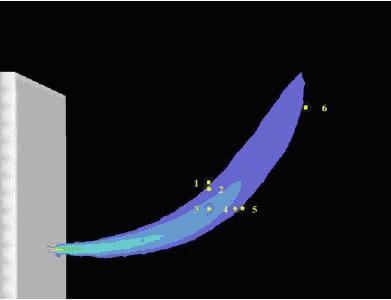
|
BRHS /
Simulation Of Hydrogen Dispersion In The AtmosphereSimulation of dispersion in the AtmosphereOnly a few efforts have been made in the past to simulate the dispersion of hydrogen gas mostly due to the poor experimental data base available. Early efforts were made in the late 1970s by the Los Alamos National Laboratories on a box model for hydrogen taking into account heat transport from the ground into the cloud Invalid BibTex Entry! , and then applying the Gaussian model of neutral and buoyant dispersion as part of the WHAZAN software package (StewartWF:1990). The NASA has developed the code AFGASDM applicable to LH2 and other aviation fuels. The model is something between a Gaussian model and an Eulerian grid model solving the conservation equations following a gas ˇ§parcelˇ¨ released as a puff until it has diluted below the flammability limits. Effects of air entrainment and phase changes are also taken into account (BrewerGD:1981). Simulation of dispersion in Semi-Confined EnvironmentsA subsonic horizontal hydrogen jet experiment and subsequent CFD simulation was reported by Swain Invalid BibTex Entry! (Fig. 1 and Table 1). Hydrogen was released at 25 scf/min through a 1 cm diameter orifice. The predicted concentrations showed good agreement with measurements.  Fig. 1: Concentration contour of a 25 scf/min release. The numbers show locations where the concentration of hydrogen was measured experimentally Table 1: Comparison between experimental and simulated H2 conc.
Simulation of dispersion in Confined EnvironmentsThe use of hydrogen applications (especially automotive) in confined environments like private garages, public parking, maintenance shops, electrolysers, compressor buildings, tunnels, etc. requires detailed evaluation of the risk related to potential hydrogen leaks and if necessary identification of measures to be taken in order to avoid buildup of flammable/explosive hydrogen atmospheres. In this respect the CFD methodology has been widely used as shown in the review below, since it is generally able to realistically account for the various geometrical configurations and complex release conditions. ReferencesInvalid BibTex Entry! << Calculation Models for the Simulation of Atmospheric Dispersion of Gas Clouds | Content | Simulation in Semi-Confined environments >> |